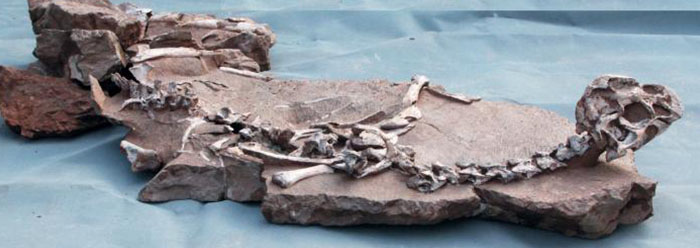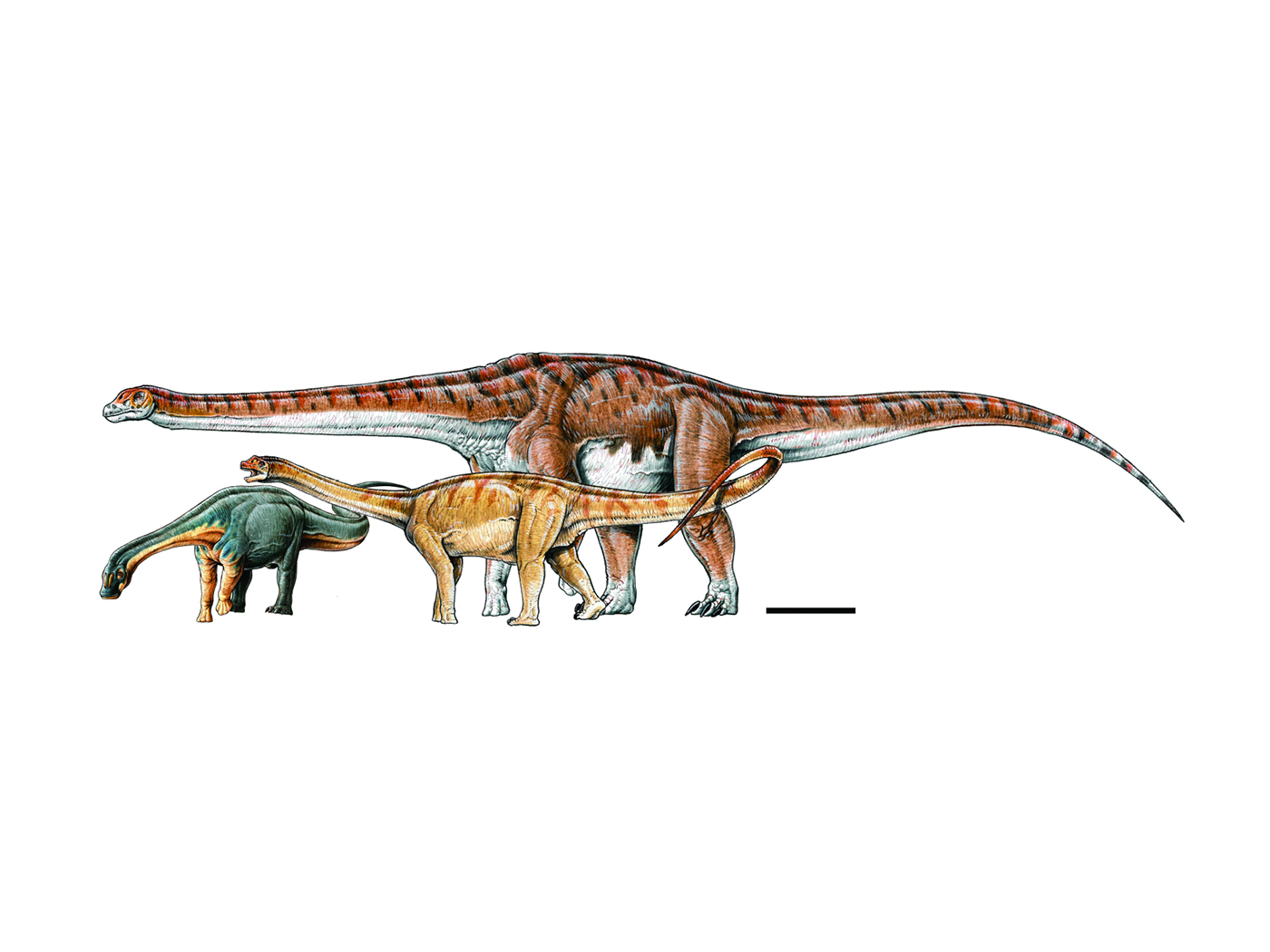Evolutionary scientists recently announced another spectacular dinosaur discovery. They nicknamed this one the Mud Dragon because it seems it died buried in mud. Junchang Lü and co-authors describe the new oviraptorid dinosaur in Scientific Reports.1
This is the sixth oviraptor-like dinosaur unearthed from the Ganzhou area of Jiangxi Province in southeastern China. The Chinese name for this poor creature is Tongtianlong limosus or “muddy dragon on the road to heaven” due to its unusual posture.
T. limosus was found nearly complete and still articulated with its arms outstretched and head raised.1 Although the specimen was discovered by a farmer and construction workers, it was still partially encased in a muddy substrate when paleontologists studied it. Unfortunately, it suffered some damage from dynamite used in excavation.
“This new dinosaur is one of the most beautiful, but saddest fossils I’ve ever seen,” says Stephen Brusette, one of the co-authors.2
Despite lack of evidence, the Scientific Reports article also claims that oviraptorid dinosaurs, like T. limosus, had feathers. Even most modern, artist renderings of these dinosaurs show them covered in feathers.1,2 Why do secular paleontologists insist oviraptorids had feathers?
Brian Thomas, ICR Science Writer, explains, “In 2007 scientists claimed to have identified quill knobs on a Velociraptor fossil.3 Since then, secular researchers have interpreted quill knobs for other similar dinosaurs.” 4
Thomas continues, “But what if the first identification of Velociraptor quill knobs was wrong? Last, tiny bone bumps have more uses than just anchoring feathers. They sometimes mark attachment points for connective tissue.”4
Oviraptorids, like the newly discovered T. limosus, have never been found with any real evidence for feathers. Secular scientists inferred them from the presence of ambiguous data like quill bumps found on a completely different species of dinosaur.
Dinosaurs were not birds and show no evidence of evolving into birds. Dinosaur brain shapes and many bone structures do not resemble birds.5 Dinosaurs and birds were created separately by God during Creation Week. No undisputed transitional fossils between dinosaurs and birds exist anywhere.
Finally, why are secular scientists so awed by the muddy burial and unusual and posture of T. limosus? Their only explanation is that this dinosaur must have become stuck in the mud, struggled, and died with its head raised. Lü and co-authors explain in their paper, “It is difficult to interpret what biological and/or taphonomic processes caused this strange posture.”1
They may be better off admitting that this posture is nearly impossible for an animal struggling in mud. How could a six-foot dinosaur get mired in the mud in the first place? And how could neck and head remain raised after it died?
Catastrophic burial during a global Flood event offers a better explanation of this dinosaur and its unusual posture. Although it’s difficult for secular science to explain this discovery, it’s easy to imagine a small dinosaur being encased in a mud-rich debris flow during the Flood, knocked flat by the force of the flow, raising its head trying to gulp one last breath of air before suffocating in a muddy tomb. In this scenario, it’s easy to see how the dinosaur’s head was preserved in a raised position as the mud catastrophically enveloped the animal, preserving the posture as it gulped for air.
The Flood still offers the best explanation of the fossils we find all over the world. Rapid burial in watery sediment is virtually the only way to make a fossil. God’s Word explains that dinosaurs and birds were created as separate kinds, fully-formed as dinosaurs and fully-formed as birds. This dinosaur’s last breath gives testament to the truth of Genesis.
References
- Lü, J., et al. 2016. A Late Cretaceous diversification of Asian oviraptorid dinosaurs: evidence from a new species preserved in an unusual posture. Scientific Reports. 6 (35780): 1-11.
- Strauss, M. 2016. “Mud Dragon” Dinosaur Unearthed—By Dynamite. National Geographic News. Posted on nationalgeographic.com November 10, 2016, accessed November 15, 2016.
- Turner, A. H., P. J. Makovicky, and M. A. Norell. 2007. Feather Quill Knobs in the Dinosaur Velociraptor. Science. 317 (5845): 1721.
- Thomas, B. 2015. Do ‘Quill Knobs’ Show Dino-to-Bird Evolution? Creation Science Update. Posted on ICR.org December 3, 2015, accessed November 16, 2016.
- Clarey, T. L. 2015. Dinosaurs: Marvels of God’s Design. Green Forest, AR: Master Books, 125-126. Available at store.ICR.org.
Image credit: Copyright © 2016. J. Lü. Adapted for use in accordance with federal copyright (fair use doctrine) law. Usage by ICR does not imply endorsement of copyright holders.
*Dr. Clarey is Research Associate at the Institute for Creation Research.
Article posted on November 28, 2016.






















